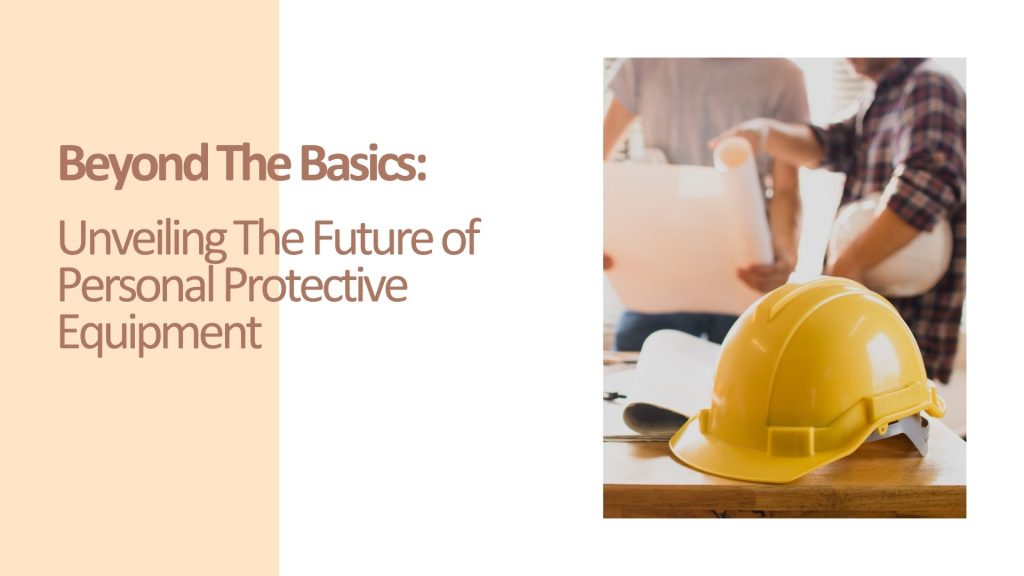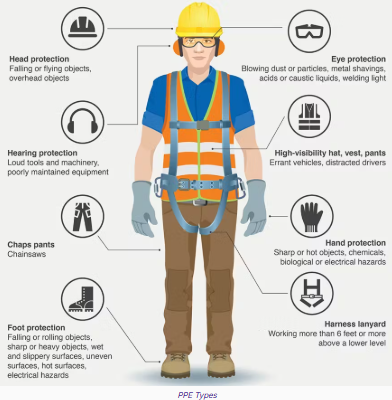Beyond The Basics: Unveiling The Future Of Personal Protective Equipment
Safety Training & Awareness Programs | BookMySafety Workplace Safety Solutions
September 30, 2025
Personal Protective Equipment (PPE) is essential for maintaining workplace safety across industries.
From construction sites to laboratories and even offices, PPE such as helmets, gloves, masks, safety boots, and protective clothing act as a shield against potential hazards. By using the right protective equipment, businesses can reduce workplace accidents, improve employee confidence, and ensure compliance with safety regulations.
What is Personal Protective Equipment (PPE)?
Personal Protective Equipment refers to clothing, accessories, or gear designed to protect workers from occupational hazards. It creates a barrier against dangers like falling objects, toxic chemicals, dust, sparks, or sharp tools. Correct use of PPE not only prevents accidents but also safeguards long-term health and boosts overall workplace safety standards.
Types of PPE

1. Head Protection
- Safety helmets and hard hats protect against falling objects and impact injuries.
- Essential in industries like construction, mining, and warehousing where reliable safety gear is mandatory.
2. Eye and Face Protection
- Safety glasses, goggles, and face shields guard against chemical splashes, sparks, and flying debris.
3. Hand Protection
- Protective gloves safeguard hands from cuts, burns, and harmful substances.
- Options include chemical-resistant gloves, cut-proof gloves, and heat-protective gloves.
4. Body Protection
- Coveralls, aprons, high-visibility clothing, and flame-resistant suits protect workers from chemicals, fire, and heavy impacts.
5. Foot Protection
- Steel-toe boots and slip-resistant shoes reduce the risk of injuries from sharp objects, heavy items, or slippery surfaces.
6. Respiratory Protection
- Masks and respirators filter dust, fumes, smoke, and harmful gases, protecting lungs from long-term health risks.
Tips for Using PPE Effectively
- Choose PPE that matches the specific workplace hazard.
- Ensure proper fit and comfort for long-term use.
- Regularly inspect PPE for wear, tear, or damage.
- Store equipment in clean and dry conditions.
- Train employees on proper PPE usage and maintenance.
The Worker’s Perspective: Comfort vs. Protection
Many workers hesitate to wear PPE because they find it uncomfortable, heavy, or restrictive. While comfort is important, skipping PPE puts them at risk of severe injuries. Employers should balance both by choosing PPE designed with ergonomics in mind, ensuring workers feel safe and comfortable.
Common Mistakes Workers Make with PPE
- Not Wearing PPE – Skipping safety gear due to discomfort or negligence.
- Using Damaged or Expired PPE – Worn-out gloves, scratched goggles, or loose helmets reduce effectiveness.
- Incorrect Usage – Wearing PPE improperly lowers protection levels.
- Lack of Cleaning & Maintenance – Dirty PPE may fail to protect and increase infection risks.
- Over-Relying on PPE – Safety should also include training, risk assessments, and safe work practices.
Why Workers Skip PPE — and How to Fix It
Common reasons workers avoid PPE include lack of awareness, poor fit, or the belief that “nothing will happen.” Addressing this requires training sessions, feedback loops, and offering PPE that is easy to use. When workers understand why PPE matters, compliance naturally improves.
Frequently Asked Questions (FAQs)
Q1. What is the biggest mistake workers make when using PPE?
The most common mistake is treating PPE as optional. Workers sometimes skip gear for comfort, but this increases risk of injury. Consistent use is just as important as choosing the right PPE.
Q2. Can PPE be shared between employees?
No, PPE should ideally be personal. Sharing increases the risk of poor fit, reduced protection, and hygiene problems, especially with items like gloves, masks, or earplugs.
Q3. Is PPE enough to guarantee workplace safety?
PPE is essential, but it’s not a magic shield. Safety also requires training, hazard awareness, and safe work practices. PPE works best as part of a full safety system.
Q4. Can PPE improve employee confidence?
Yes. Workers feel safer and more focused when they trust their protective gear. This can actually improve efficiency and reduce stress in high-risk jobs.
Q5. What’s the difference between reusable and disposable PPE?
Reusable PPE (like helmets or safety boots) can be cleaned and used for months or years, while disposable PPE (like surgical masks or single-use gloves) must be discarded after each use to maintain hygiene and safety.
Conclusion
Personal Protective Equipment (PPE) is more than safety gear—it’s a vital component of workplace safety management. By selecting the right PPE, ensuring proper use, and maintaining equipment, companies can significantly reduce workplace injuries and health risks. Encouraging a culture of safety, backed by PPE awareness and training, creates a secure environment where employees can thrive.
